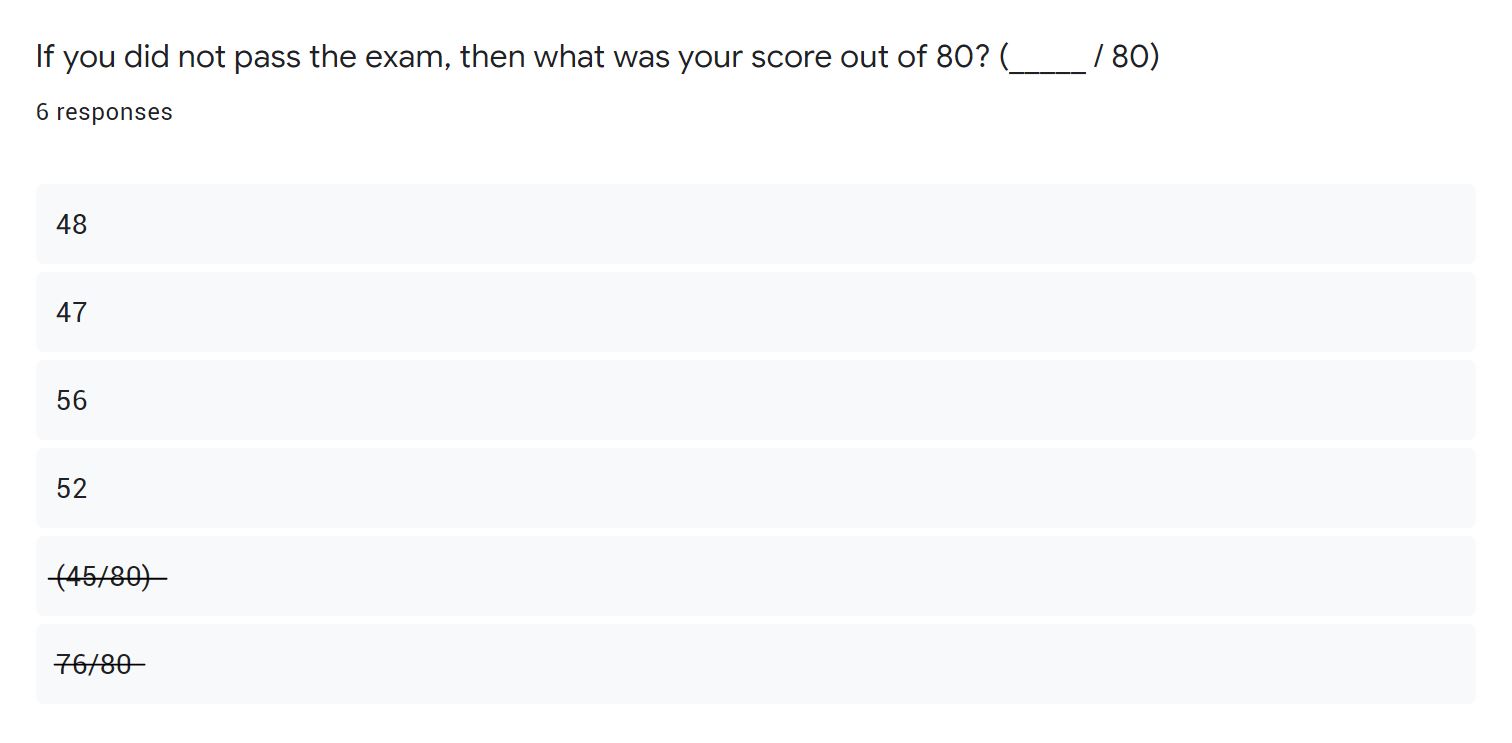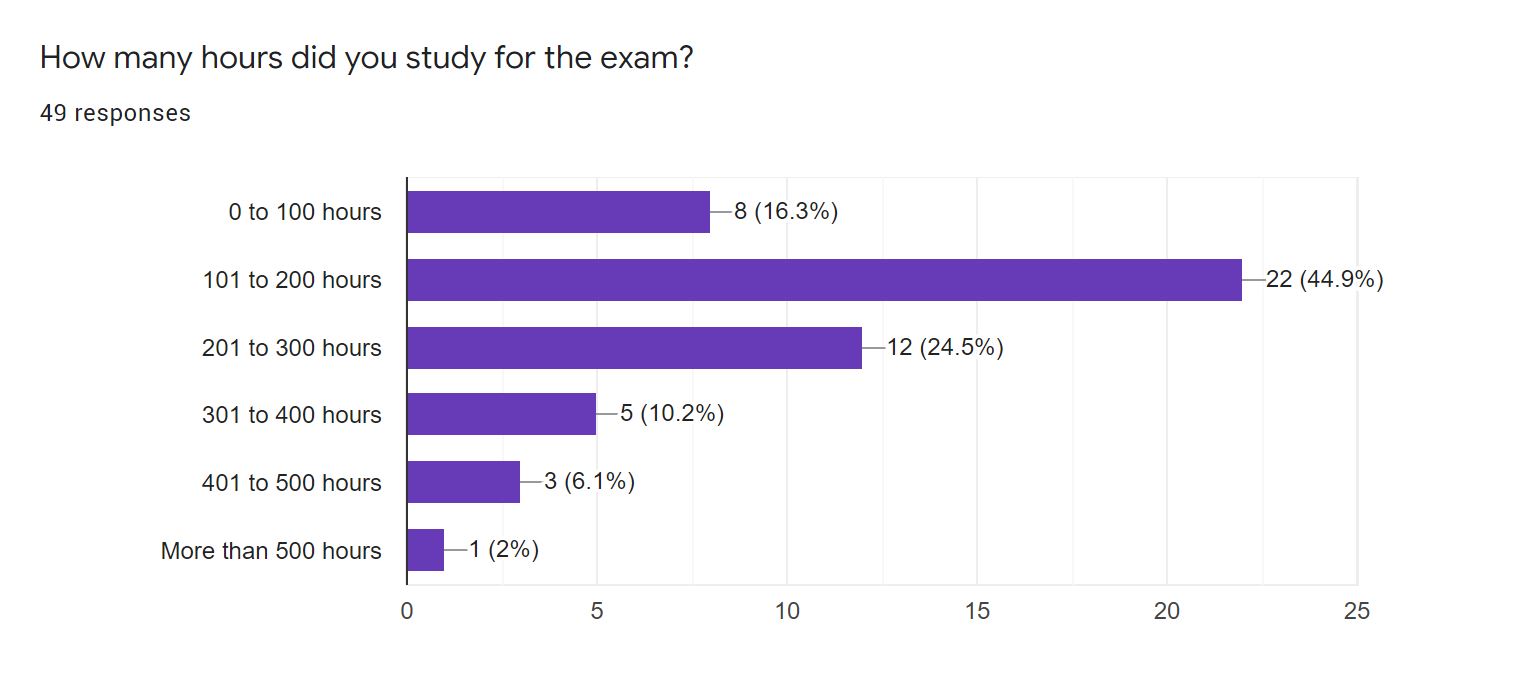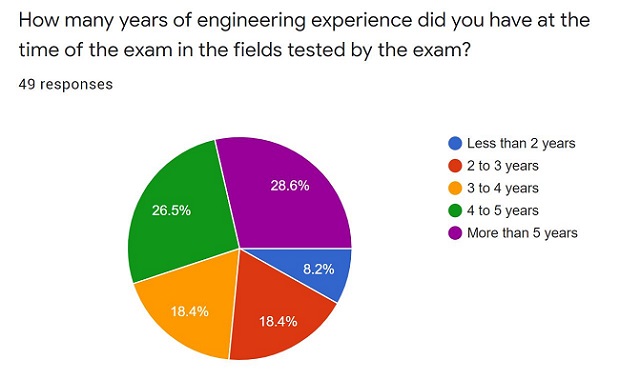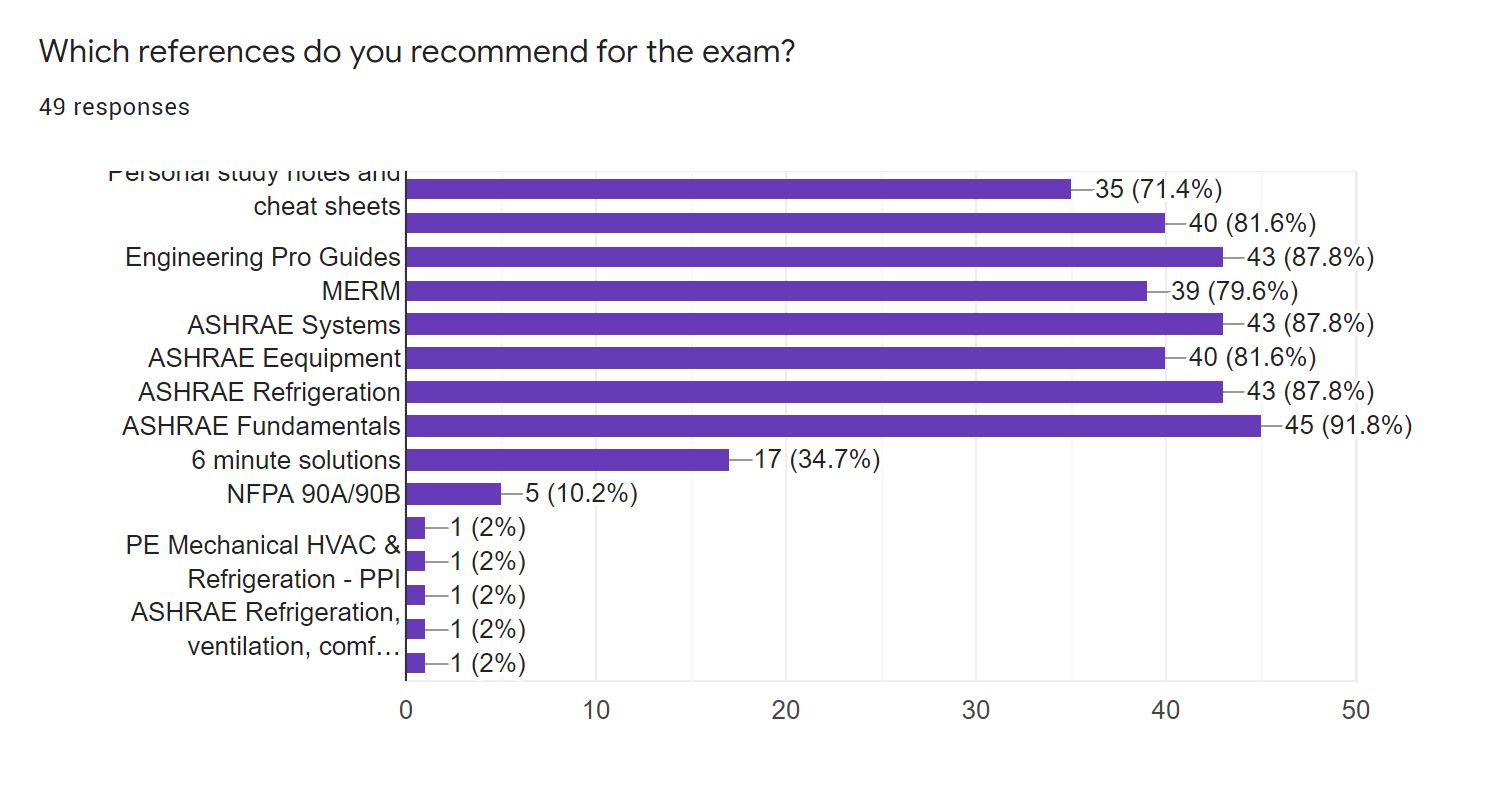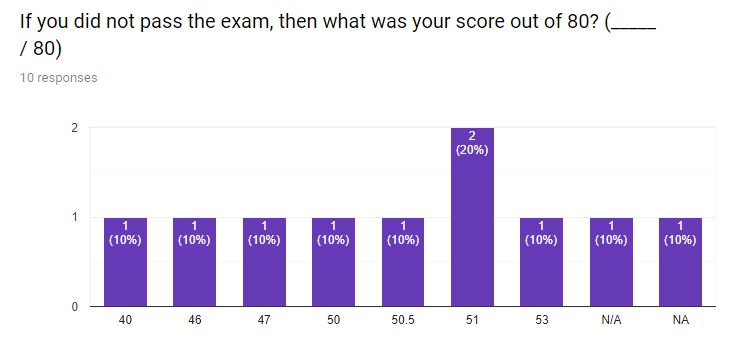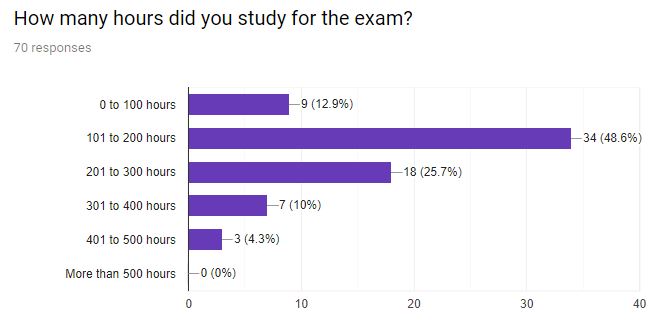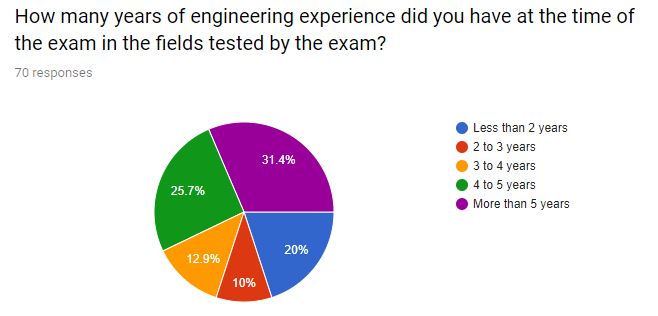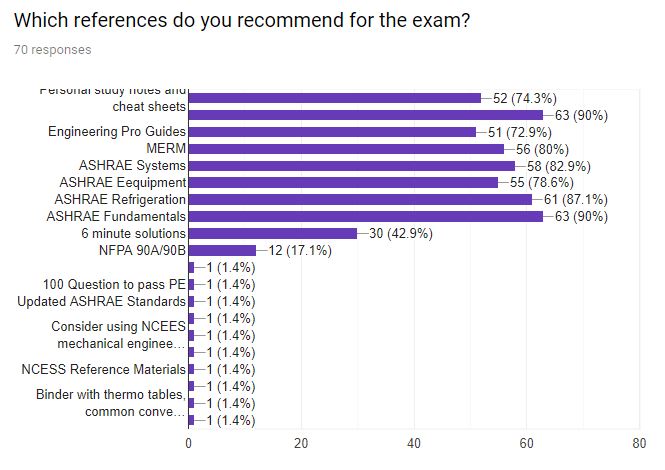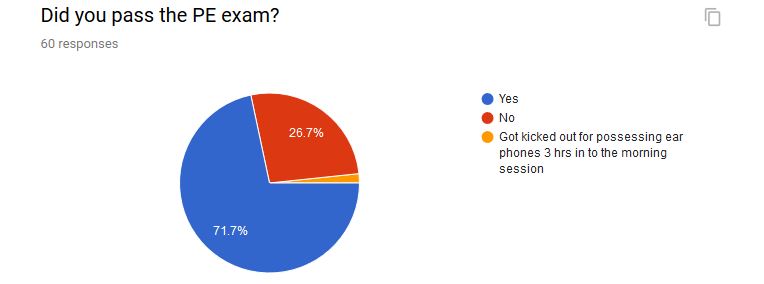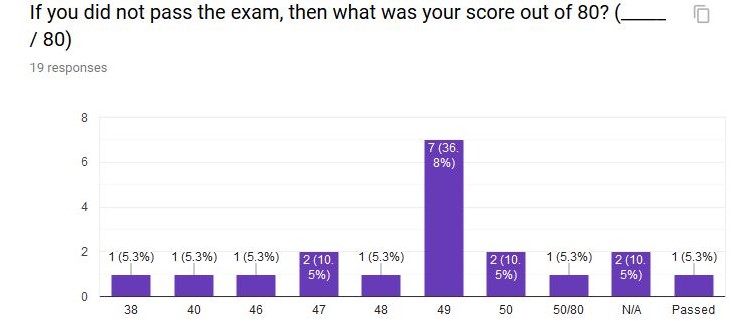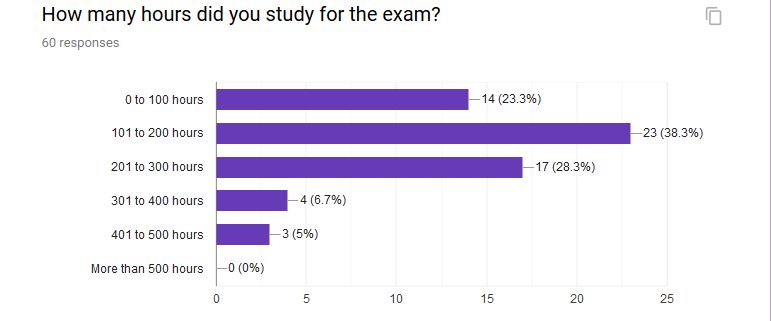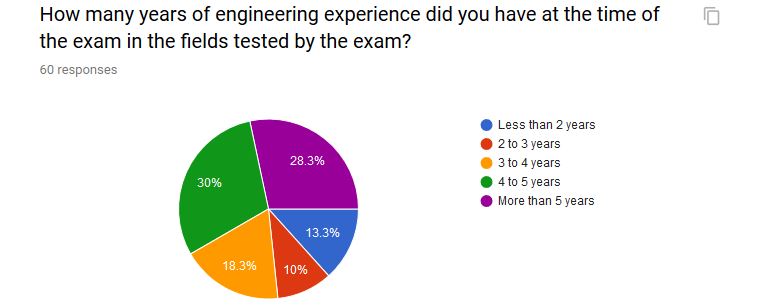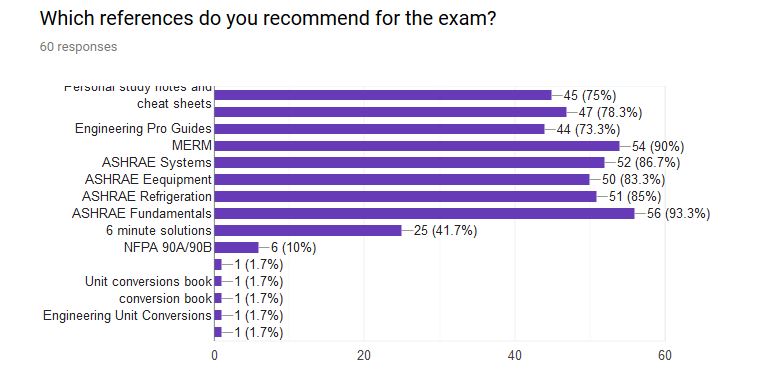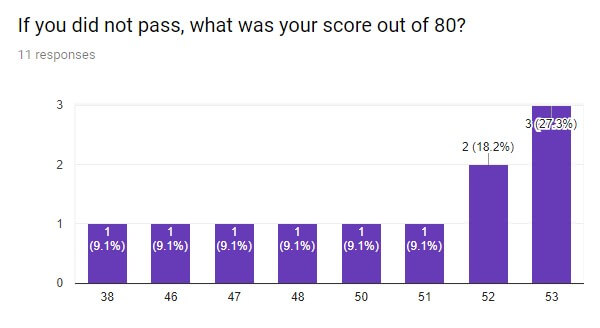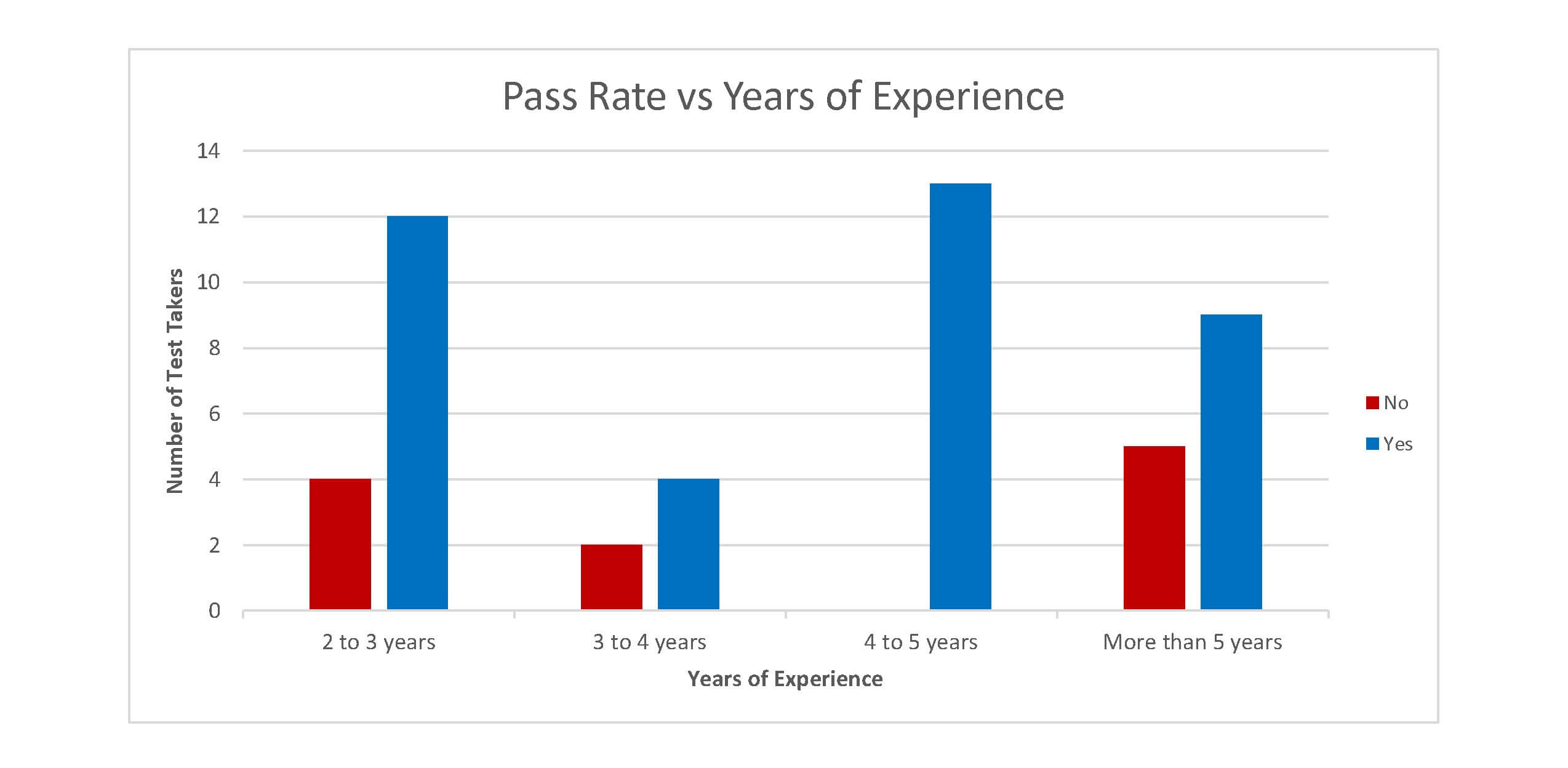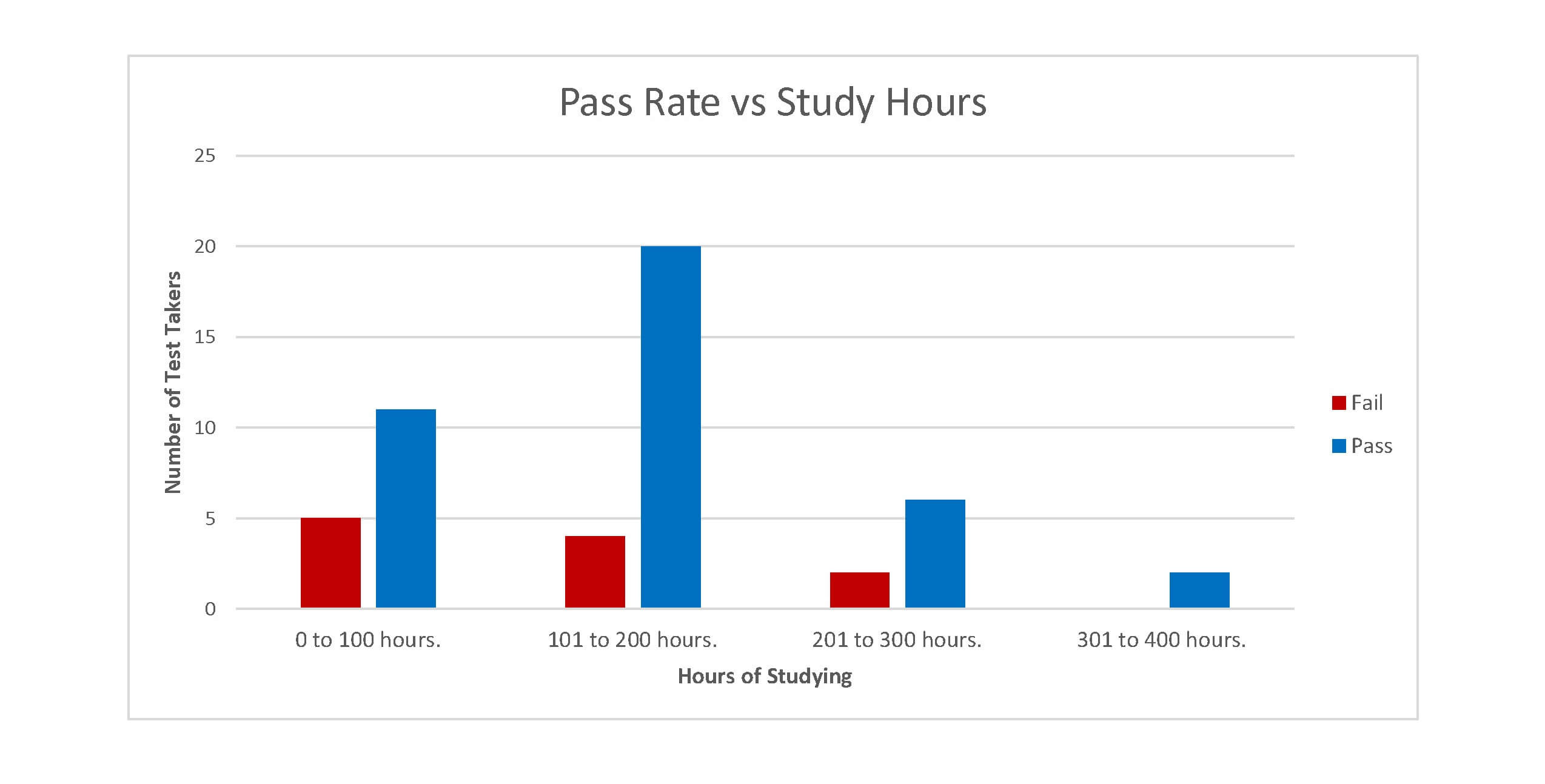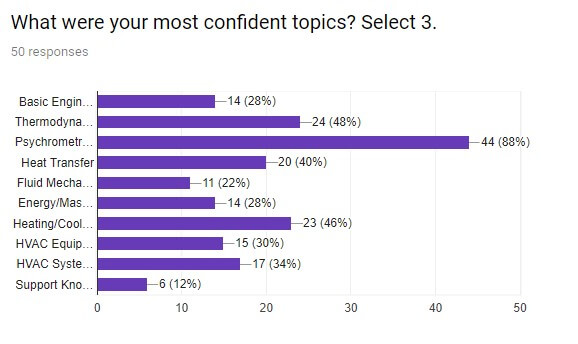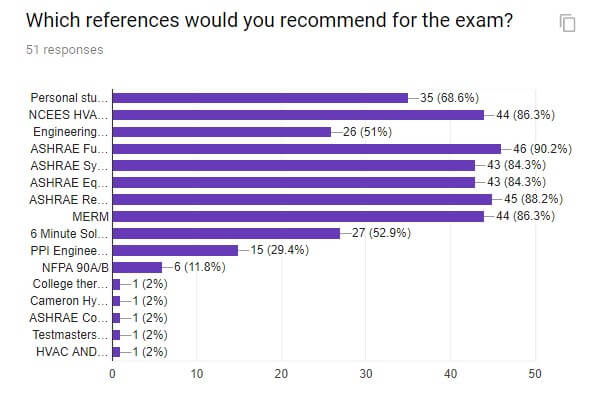
Engineering Pro Guides is your guide to passing the Mechanical & Electrical PE and FE Exams
Engineering Pro Guides provides mechanical and electrical PE and FE exam technical study guides, practice exams and much more. Contact Justin for more information.
Email: contact@engproguides.com
EXAM TOOLS
Results of HVAC & Refrigeration PE Exam Survey
After every PE exam, I conduct an online survey with as many PE exam test takers that I can find. I primarily use my website, Engineering Pro Guides and Engineer Boards to find test takers to take the survey. The survey provides insight into an estimated passing score, how well test takers do based on experience and number of hours studied, which areas of the exam are difficult or easy. The raw results of the survey are shown on the link below. This link shows a summary of the results without any pivot chart analysis.
October 2019 Survey Summary
This summary is taken from the raw data compiled from the October 2019 Surveys.
Number of Test Takers (999) vs Number of Survey Results (49)
The survey is only as good as the number of test takers that take the survey. According to the NCEES website, there were 756 first time test takers in October 2019 compared to 660 in April 2019 and 243 repeat takers in October 2019 compared to 270 in April 2019, with a total of 999 test takers compared to 930 HVAC PE Exam test takers on April 2019. The survey had 49 responses or 4.9% of the total test takers. As you go through the results of the survey, please remember that only a small percentage of the test takers took the survey so you should be careful when assigning authority to the results of the survey.
Survey Pass Rates (88%) vs NCEES Pass Rates (61%)
The NCEES pass rates are 69% for the 756 first time test takers and 37% for the 243 repeat test takers. This results in an overall pass rate of 61%. The survey test takers have a pass rate of 88%.
Estimated Cut Score: 57/80
The estimated cut score is based on the highest fail score of 56 received in the survey. That is an overall cut score of 71%. This is the highest cut score we have seen to date in these surveys. Note that the last two responses have been discarded, since they have been improperly inputted into the survey.
Ideal Number of Study Hours: Around 200 hours
The majority of the test takers that passed the exam study around 100 to 200 hours at a pass rate of 95%. This has been consistent throughout the last 2 years of surveys. Few test takers study less than 100 hours. In the past, those that study less than 100 hours have had the lowest pass rate, but there is not enough information in this term's survey to make that conclusion. Those that study 200 to 300 hours have an average pass rate of 90%. Previously, the pass rates went down after 300+ hours of studying. One possible explanation for longer hours and lower pass rates is unfocused studying However, a few test takers in this round that put in lots of effort (400+ hours) have been successful.
Ideal Years of Experience: Around 2 to 5 years
The majority of the test takers have more than 4 years of experience. When you compare the pass rates based on years of experience, those with less than 2 years of experience had the lowest pass rate at 75%. Those with 2 to 4 years of experience have the highest pass rates with ranges of 100%. In the past the optimal range of experience has been 3-5 years. This has shifted slightly, but the general range of 2-5 years still shows the highest pass rate. This has shown that the PE exam is geared more towards engineers with more practical experience, rather than to engineers right out of college/university. However, once you have more than 5 years of experience, the pass rate goes down to 77%, which could indicate being out of touch with the test taking mode or could correlate with the lower pass rates of repeat test takers.
Recommended References
Below is the list of the recommended references in order of percentage of people that recommended the reference. Starting April 2020, the exam will be converted to a computer based testing (CBT) format. This means that you are no longer allowed to bring in outside resources to the exam. Your only reference will be the NCEES Mechanical PE Handbook, downloadable for free on your MyNCEES account. The resources listed below are still an important part of your studying. They can be used to help you understand how to use the equations and tables in the NCEES Handbook and to familiarize you with experience and application type questions that are not covered in the NCEES Handbook.
- ASHRAE Fundamentals
- Engineering Pro Guides Products (Technical Study Guide, Full Exam and/or References Exam)
- ASHRAE Systems & Equipment
- ASHRAE Refrigeration
- NCEES Sample Exam
- ASHRAE HVAC Applications
- MERM
- Personal Notes & Cheat Sheets
- 6 Minutes Solutions
- NFPA 90A/B
Weak Areas
The area that most test takers wish they had studied more is familiarity with the ASHRAE Handbooks. Weak areas also included Heat Transfer and Fluid Mechanics. Unfortunately outside resources will no longer be allowed in the upcoming tests. In the past surveys, the weakest areas were directed more towards experience type questions that deal with the HVAC Systems, Equipment & Components. It is therefore still important to review the ASHRAE Handbooks in conjuction with the new NCEES Handbook during your studying.
April 2019 Survey Summary
This summary is taken from the raw data compiled from the April 2019 Surveys.
Number of Test Takers (930) vs Number of Survey Results (70)
The survey is only as good as the number of test takers that take the survey. According to the NCEES website, there were 660 compared to 641 first time takers in October 2018 and 270 compared to 219 repeat takers in October 2018, with a total of 930 compared to 860 HVAC PE Exam test takers on October 2018. The survey had 70 responses or 7.5% of the total test takers. As you go through the results of the survey, please remember that only a small percentage of the test takers took the survey so you should be careful when assigning authority to the results of the survey.
Survey Pass Rates (86%) vs NCEES Pass Rates (72%)
The NCEES pass rates are 77% for the 660 first time test takers and 60% for the other 270 test takers. This results in an overall pass rate of 72%. The survey test takers have a pass rate of 72%.
Estimated Cut Score: 54/80
The estimated cut score is based on the highest fail score of 53 received in the survey.
Ideal Number of Study Hours: Around 200 hours
The majority of the test takers that passed the exam study around 100 to 200 hours at a pass rate of 91%. It seems like those that study less than 100 hours have low pass rates at 75%. Those that study 200 to 300 hours have an average pass rate of 94%. The pass rate goes down once you study more than 300 hours. The pass rates for 301 to 400 hours is 71% and 67% for more than 400 hours.
Ideal Years of Experience: Around 3 to 5 years
The majority of the test takers have more than 4 years of experience. When you compare the pass rates based on years of experience, those with less than 3 years of experience had the lowest pass rate at 86%. Those with 3 to 5 years of experience have the highest pass rates with ranges of 94% to 100%. This seems to indicate that the PE exam is geared more towards engineers with more practical experience, rather than to engineers right out of college/university. But once you have more than 5 years of experience, the pass rate goes down to 77%.
Recommended References
This is the list of the recommended references in order of percentage of people that recommended the reference.
- ASHRAE Fundamentals
- ASHRAE Refrigeration
- ASHRAE Systems & Equipment
- ASHRAE HVAC Applications
- Personal Notes & Cheat Sheets
- MERM
- Engineering Pro Guides Products (Technical Study Guide, Full Exam and/or References Exam
- 6 Minutes Solutions
- NFPA 90A/B
Weak Areas
The weak areas in this exam were as shown below in order of difficulty. In the past surveys, the weak areas were Systems & Components, Equipment & Components, Thermodynamics and Fluid Mechanics. It seems like the weakest areas are the more experience type questions that deal with the HVAC Systems, Equipment & Components. The principles like Thermodynamics, Psychrometrics, Heat Transfer, etc, were easy for the majority of the test takers.
October 2018 Survey Summary
This summary is taken from the raw data compiled from the October 2018 Surveys.
Number of Test Takers (860) vs Number of Survey Results (60)
The survey is only as good as the number of test takers that take the survey. According to the NCEES website, there were 641 compared to 632 first time takers in October 2017 and 219 compared to 164 repeat takers in October 2017, with a total of 860 compared to 796 HVAC PE Exam test takers on October 2017. The survey had 60 responses or 7.0% of the total test takers. As you go through the results of the survey, please remember that only a small percentage of the test takers took the survey so you should be careful when assigning authority to the results of the survey.
Survey Pass Rates (72%) vs NCEES Pass Rates(60%)
The NCEES pass rates are 69% for the 641 first time test takers and 33% for the other 219 test takers. This results in an overall pass rate of 60%. The survey test takers have a pass rate of 72%.
Estimated Cut Score: 51/80
The estimated cut score is based on the highest fail score received in the survey.
Ideal Number of Study Hours: Around 200 hours
The majority of the test takers that passed the exam study around 100 to 200 hours at a pass rate of 83%. It seems like those that study less than 100 hours have the lowest pass rates at 53%. Those that study more than 200 hours have an average pass rate of 73%. Rarely do people study more than 300 hours. On average the 200 hours results in 10 to 20 hours per week of studying.
Ideal Years of Experience: Around 4 to 5 years
The majority of the test takers have more than 4 years of experience. When you compare the pass rates based on years of experience, those with less than 3 years of experience had the lowest pass rate at 46%. Those with more than 3 years of experience have the highest pass rates with ranges of 73% to 86%. This seems to indicate that the PE exam is geared more towards engineers with more practical experience, rather than to engineers right out of college/university.
Recommended References
This is the list of the recommended references in order of percentage of people that recommended the reference.
- ASHRAE Fundamentals
- ASHRAE Refrigeration
- ASHRAE Systems & Equipment
- ASHRAE HVAC Applications
- Personal Notes & Cheat Sheets
- MERM
- Engineering Pro Guides Products (Technical Study Guide, Full Exam and/or References Exam
- 6 Minutes Solutions
- NFPA 90A/B
Weak Areas
The weak areas in this exam were as shown below in order of difficulty. In the past surveys, the weak areas were Systems & Components, Equipment & Components, Thermodynamics and Fluid Mechanics. It seems like the weakest areas are the more experience type questions that deal with the HVAC Systems, Equipment & Components. The principles like Thermodynamics, Psychrometrics, Heat Transfer, etc, were easy for the majority of the test takers.
October 2017 Survey Summary
Number of Test Takers (796) vs Number of Survey Results (51)
The survey is only as good as the number of test takers that take the survey. According to the NCEES website, there were 632 first time takers and 164 repeat takers, with a total of 796 HVAC & Refrigeration PE Exam test takers on October 2017. The survey had 51 responses or 6.4% of the total test takers. As you go through the results of the survey, please remember that only a small percentage of the test takers took the survey so you should be careful when assigning authority to the results of the survey.
Survey Pass Rates (78.4%) vs. NCEES Pass Rates (64.4%)
The pass rates on the survey indicate that 78.4% people surveyed passed the exam and 21.6% failed the exam. The NCEES website indicates that 70% of first time test takers passed the exam and 43% of repeat test takers passed the exam. The overall pass rate was 64.4%.
Estimated Cut Score: 53/80
The estimated cut score is determined by the highest fail score reported on the survey or on the Engineer Boards forum. The highest fail score was 53. This means that the possible passing score was 54. However, based on emails from other test takers who did not take the survey, the highest fail score reported was 56.
Ideal Years of Experience: Around 4 to 5 years
The following graph shows the relationship between passing/failing and the number of years of experience. Based on this graph, it appears the majority of people take the exam as soon as they are eligible. The 2 to 3 year eligibility applies to states like California which only require 2 years of experience. The number of failing test takers seem to increase as the years of experience increases. One possible theory is that engineering principles are less likely to be remembered as the number of years between completing college increases. Since roughly 50% of the PE exam tests on principles, failing to remember engineering theory from college makes passing much more difficult. However, it should be noted that the application type problems become easier with an increase of experience years.
Ideal Hours Studied: Around 200 hours
The following graph shows the relationship between passing/failing and the number of study hours. Based on this graph, the number of failing test takers reduces with increased study hours, which seems obvious. However, there appears to be a sweet spot at the 101 to 200 hours of studying. The number of passing test takers peaks at the 101 to 200 level and goes down after this point.
Weak Areas: Fluid Mechanics, Equipment & Components and Systems & Components
On the survey, each person was asked to choose three of their least confident topics. This question provides insight into which of the topics proves to be the most difficult for examinees. On the survey, test takers struggled most with Fluid Mechanics, HVAC Equipment & Components, HVAC Systems & Components and Support Knowledge. The best insight to take from this information is not to be too worried if you struggle in these areas, since others that found these to be their weak areas still passed. However, remember that the difficulty level is relative to each person and that the survey question is what was the ‘most’ difficult. You should still have a good understanding of these topics, but if you want to set yourself apart from other test takers, then you should study these areas more diligently, especially since these topics have a high amount of problems on the exam.
Strong Areas: Psychrometrics, Thermodynamics, Heat Transfer & Heating/Cooling Loads
On the survey, each person was asked to choose three of their most confident topics. This question provides insight into which of the topics proves to be the easiest for people. On the survey, test takers did well in Psychrometrics, Thermodynamics, Heat Transfer and Heating/Cooling Loads. The best insight to take from this information is that if you struggle in these areas, then you SHOULD be worried, because people who passed did really well in these areas. You should be confident in these areas, especially since these topics have a high amount of problems on the exam.
Recommended References
This is the list of the recommended references in order of percentage of people that recommended the reference.
- ASHRAE Fundamentals
- ASHRAE Refrigeration
- ASHRAE Systems & Equipment
- ASHRAE HVAC Applications
- Personal Notes & Cheat Sheets
- MERM
- 6 Minutes Solutions
- Engineering Pro Guides Products (Technical Study Guide, Full Exam and/or References Exam
- PPI
- NFPA 90A/B

